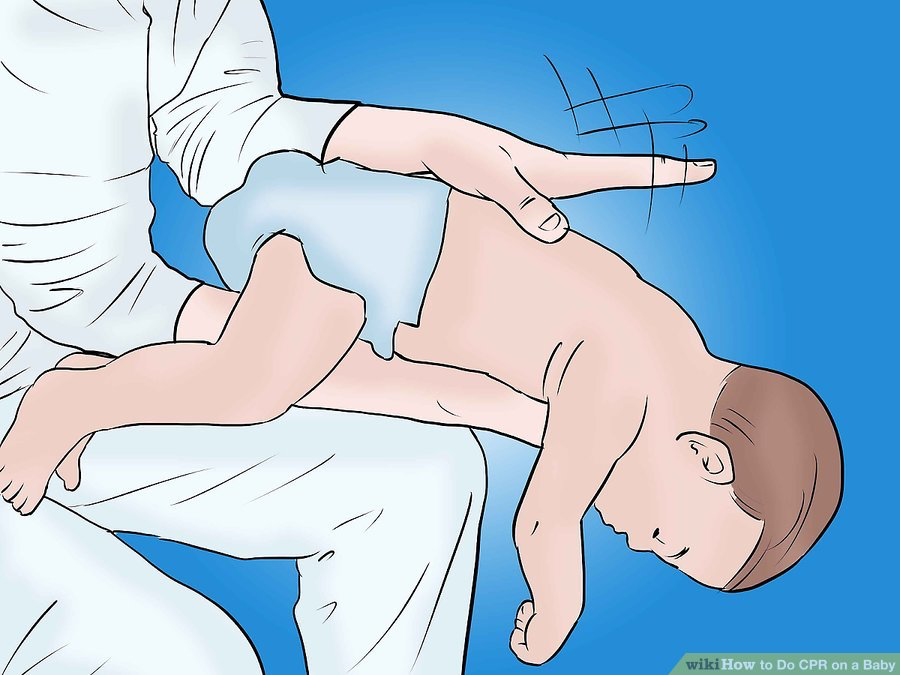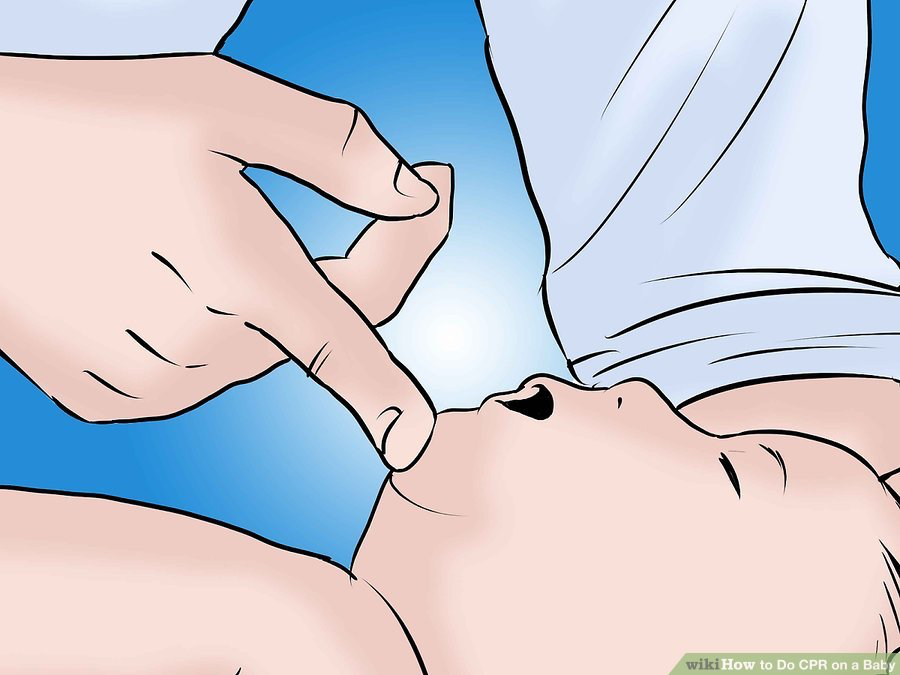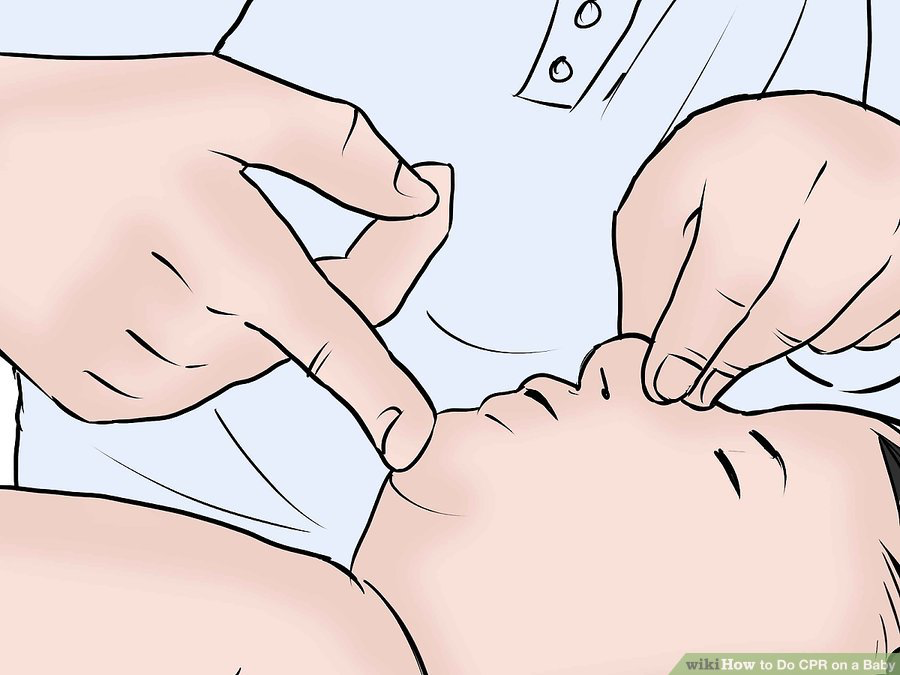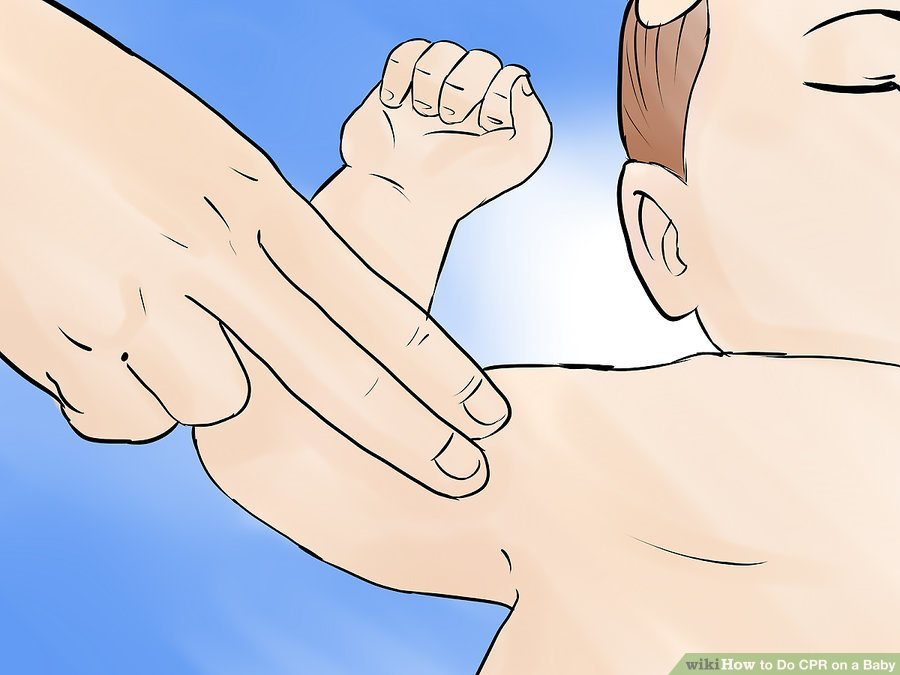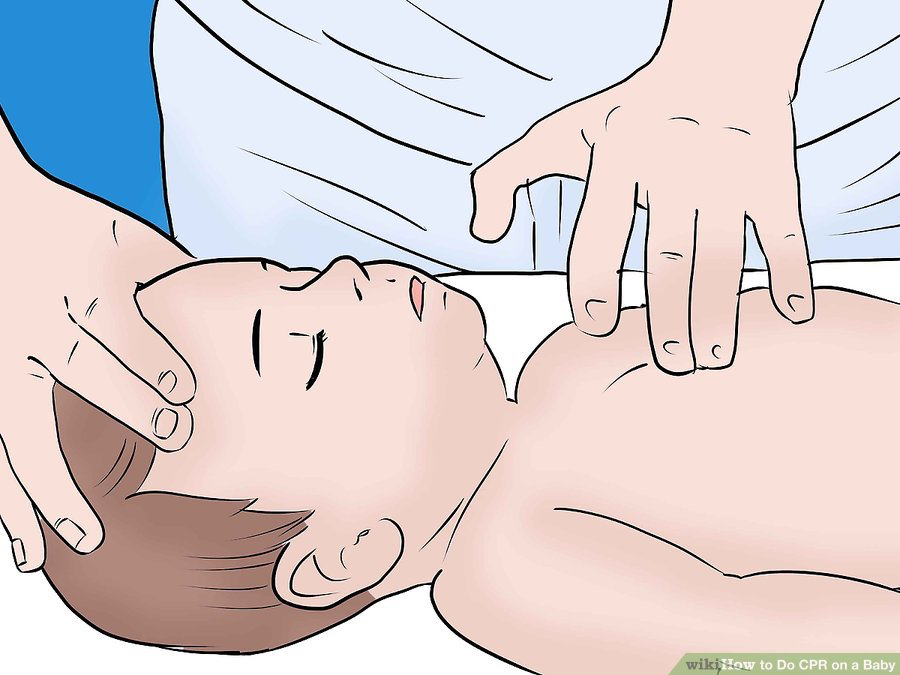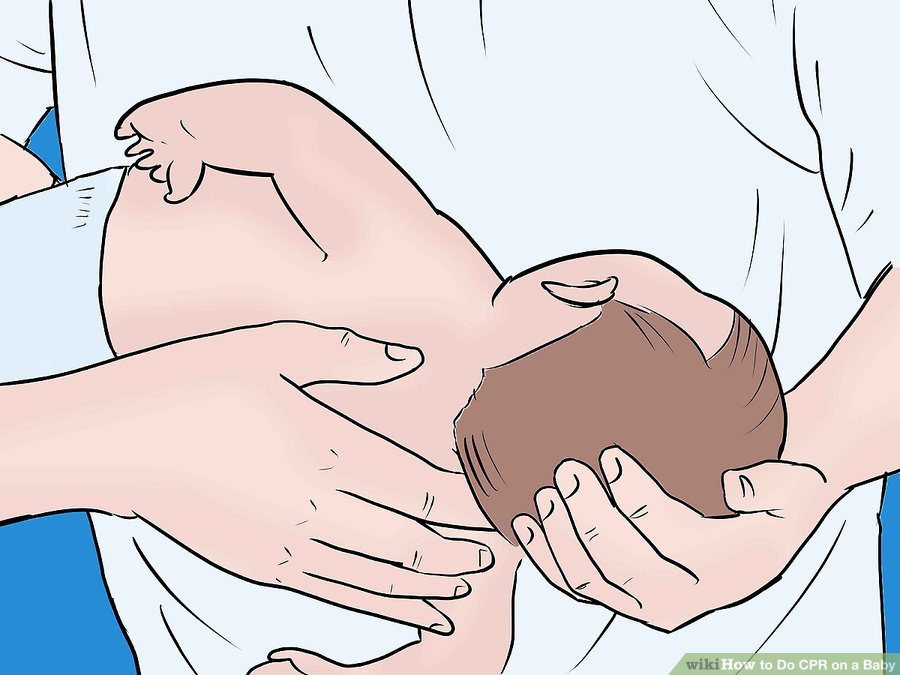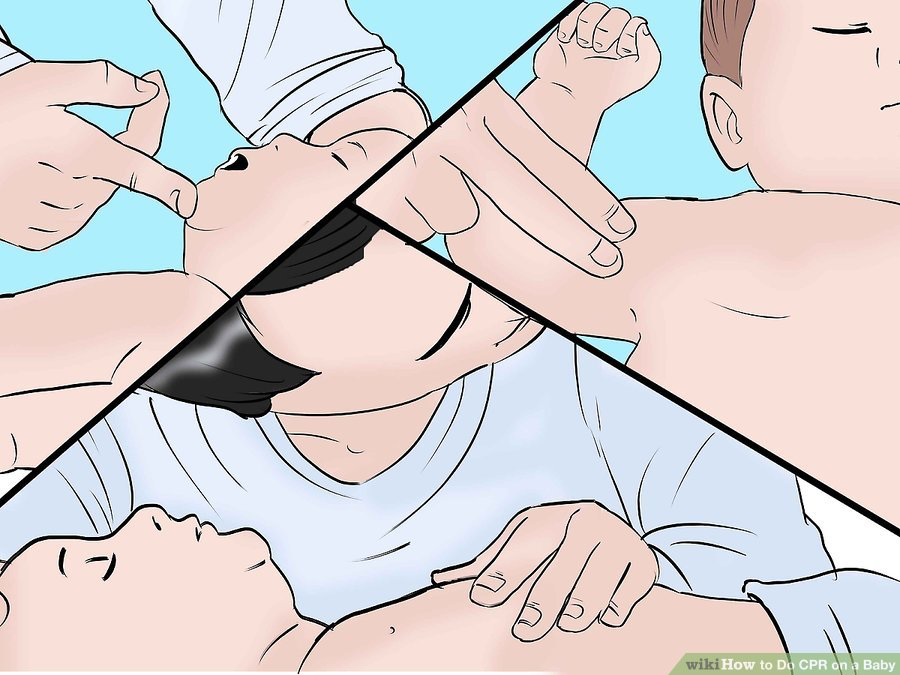Back First Aid Explained
How to Do CPR on a Baby
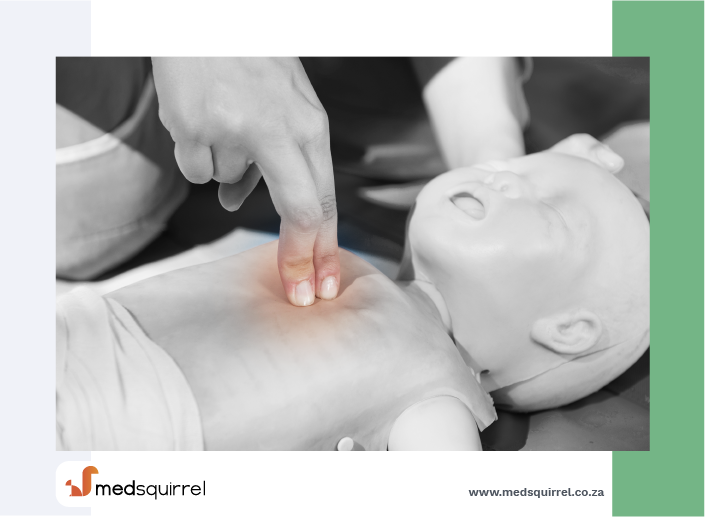
We have selected the following expert medical opinion based on its clarity, reliability and accuracy. Credits: Sourced from the website wikiHow. Please refer to your own medical practitioner for a final perspective, assessment or evaluation.
Overview
Though CPR (cardiopulmonary resuscitation) should be administered by individuals trained at a certified first aid course, normal bystanders can also make a significant difference in the survival of children undergoing cardiac arrest. Follow these steps, updated to reflect 2010 American Health Association guidelines, to learn how to perform CPR on children. For children older than age 1, follow child CPR protocol and for adults, follow adult protocol.
Method 1: Diagnosing the Situation
1. Check if the baby is conscious
It's best to flick your fingers against the feet. If the baby doesn't respond, ask someone to call for emergency help while you go on to the next step. If you are alone with the baby, follow the steps below for 2 minutes (to provide immediate first aid) before calling emergency services.
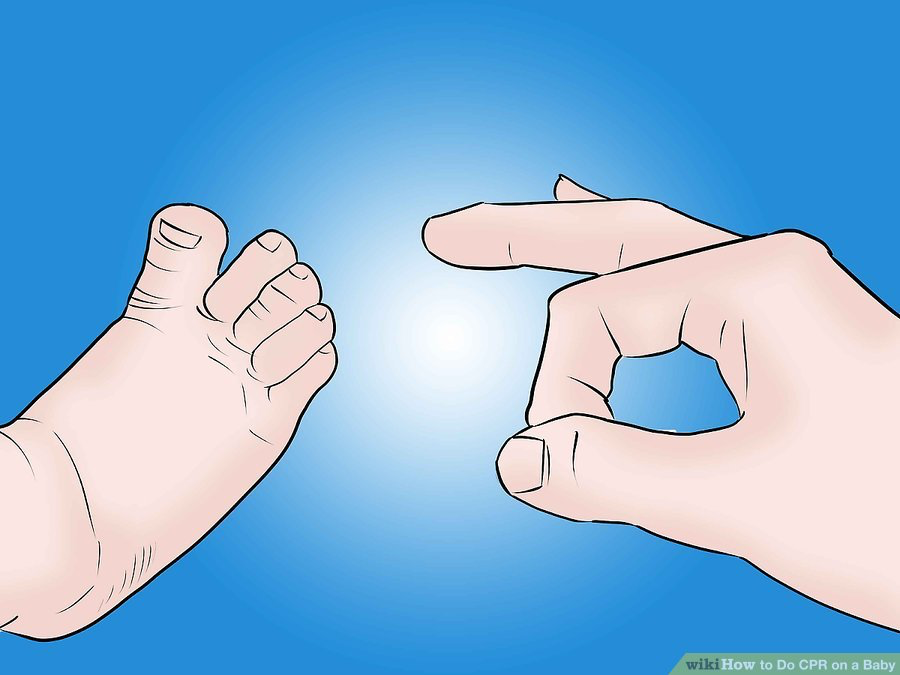
2. If the baby is conscious but choking, administer first aid before attempting CPR
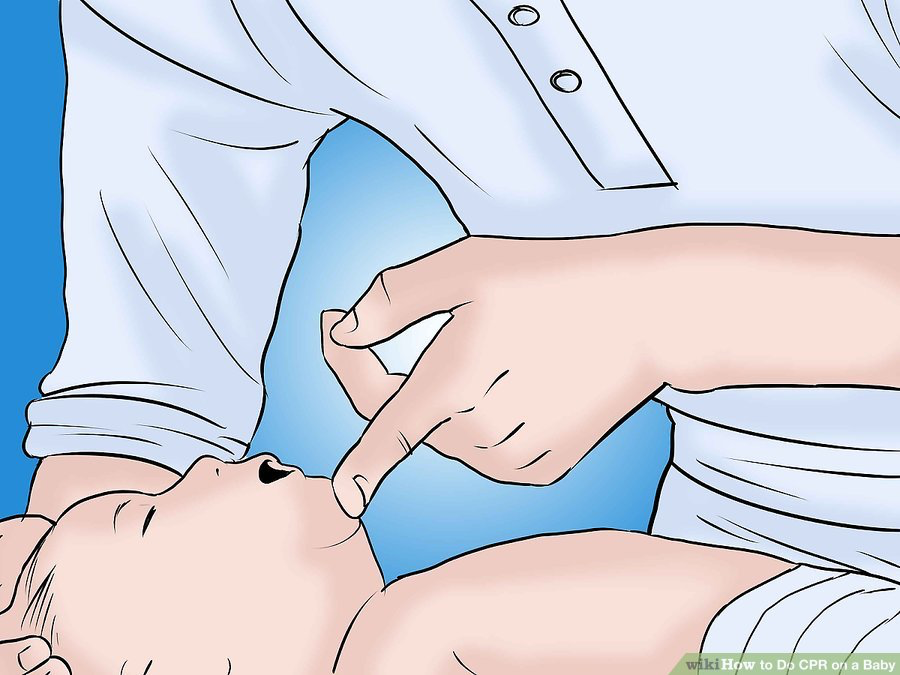
Whether the baby is breathing should determine your course of action:
- If the baby is coughing or gagging while choking, let her continue to cough and gag on her own. Coughing and gagging - a good sign - means that her airways are only partially blocked.

- If the baby is not coughing, you'll need to be prepared to perform back blows and/or chest thrusts in order to dislodge whatever is blocking her airways.
3. Check the baby's pulse
Check for breathing again, and this time place your index and middle fingers on the inside of the baby's arm, between the elbow and the shoulder.
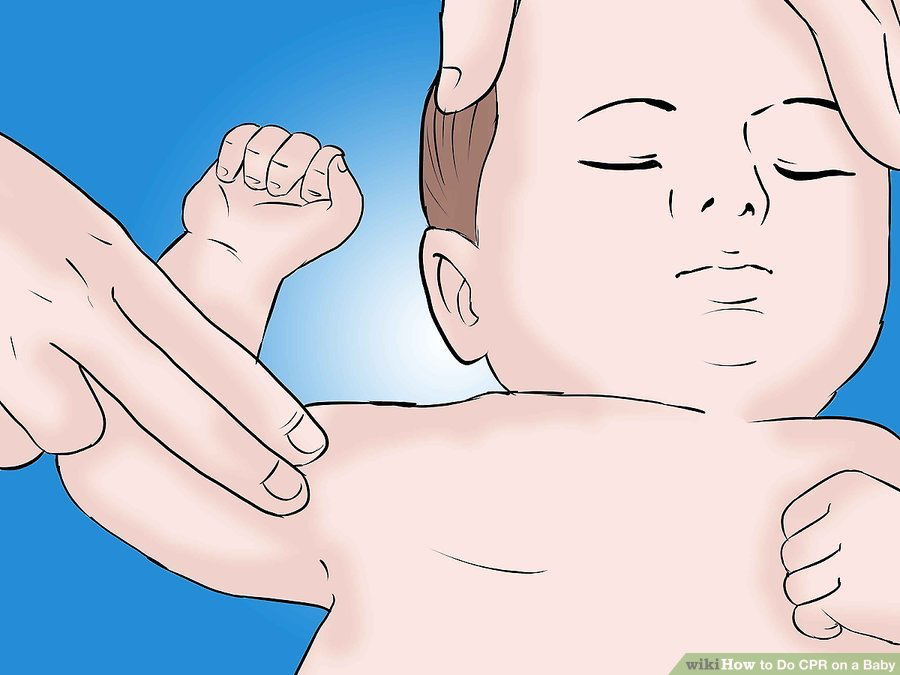
- If the baby has a pulse and is breathing, put the body in recovery position.
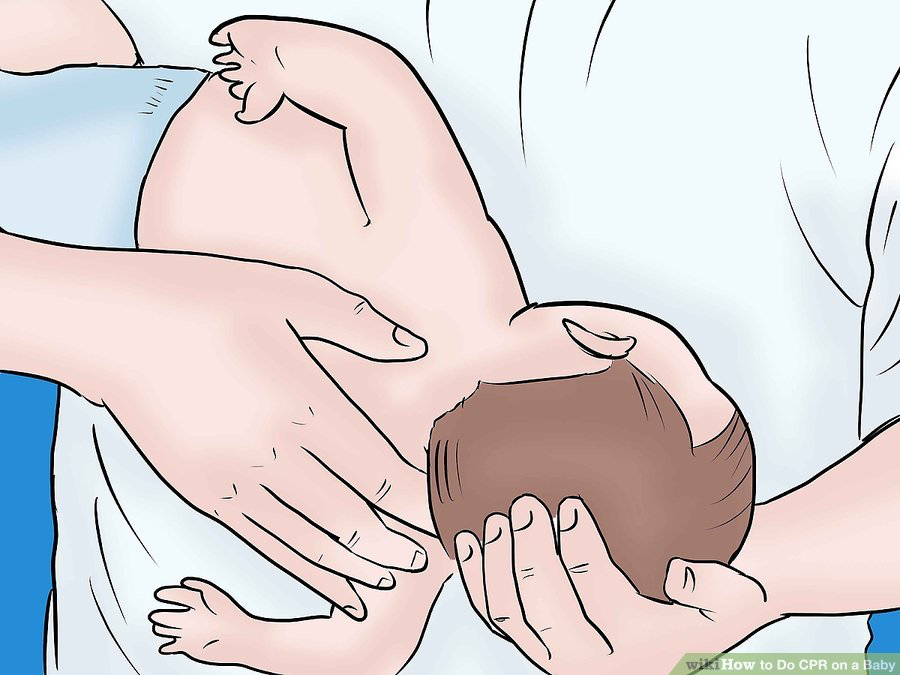
- If there is no pulse and no breathing, continue with the next steps to perform CPR, which is a combination of compressions and breaths.
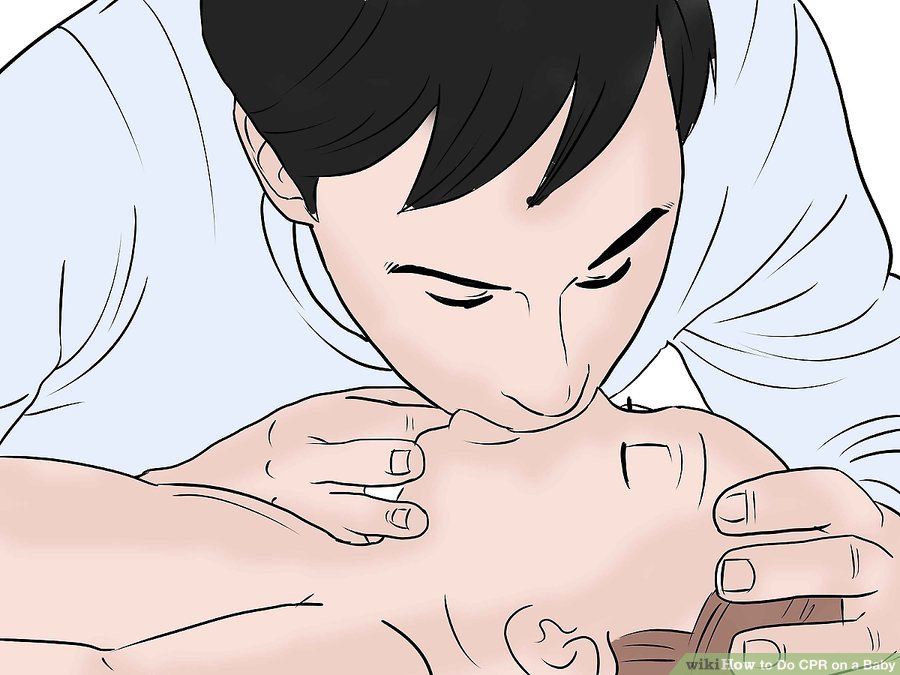
Method 2: Performing CPR
1. Open the airway
Gently lift the baby's head back and chin up to open the child's airway. The airway is small, so this won't be a drastic movement. Again, check for breathing during this time, but for no longer than 10 seconds.
2. Give the baby two rescue breaths
If you have one, put a face shield on the baby to prevent the exchange of bodily fluids. Pinch the nose shut, tilt the head back, push up the chin, and give two breaths, each lasting about one second. Exhale gently until the chest rises; exhaling too forcefully can cause injury.
- Remember to pause in between breaths to let the air out.
- If you feel that the breaths did not go in (the chest doesn't rise at all) the airway is obstructed and the child may be choking.
3. Check for the brachial pulse after doing the first two rescue breaths
If there is no pulse, begin CPR on baby.
4. Compress the chest 30 times with several fingers
Take two or three fingers held together and place them in the middle of the baby's chest right below the nipples. Gently, fluidly compress the baby's chest 30 times.
- If you need to brace your fingers because they are getting tired, use your second hand to help assist the process. Otherwise, keep your second hand cradling the baby's head.
- Try to perform your chest compressions at a rate of about 100 compressions per minute. That may seem like a lot, but it's actually only a little over one chest compression a second. Still, try to maintain a fluid push and release when performing compressions.
- Press down 1/3 to 1/2 the depth of the baby's chest. This usually works out to about 1 and 1/2 inches.
5. Perform the same series of two rescue breaths and 30 chest compressions until you are relieved or see signs of life
At the right speed, you should do about 5 sets of rescue breaths and compressions within approximately two minutes.
Once you start CPR, don't stop unless:
- You see signs of life (baby moves, coughs, breathes noticeably, or vocalizes). Vomiting is not a sign of life.

- Another trained person takes over
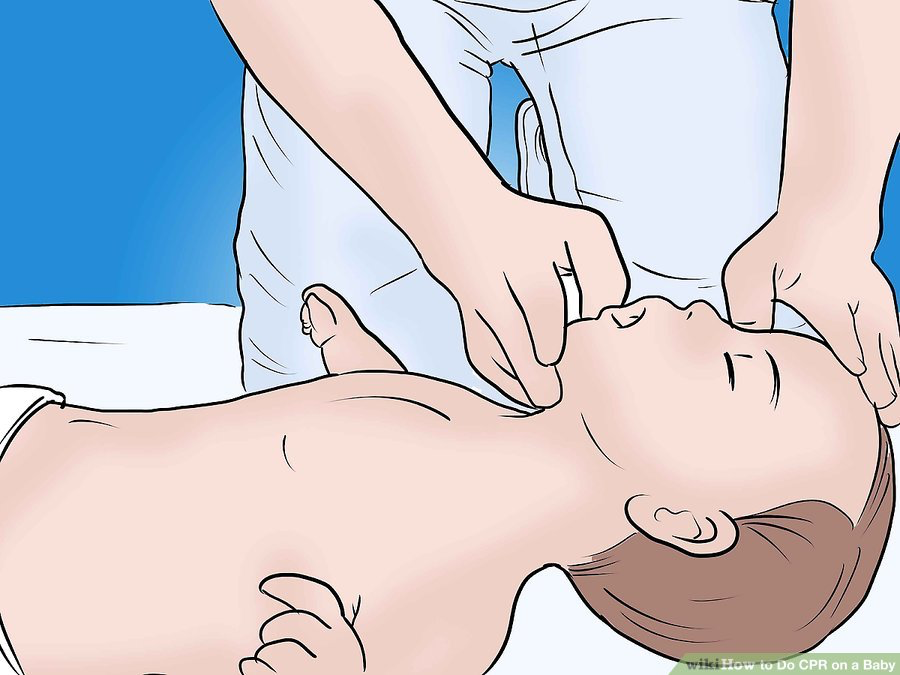
- A defibrillator is ready to be used
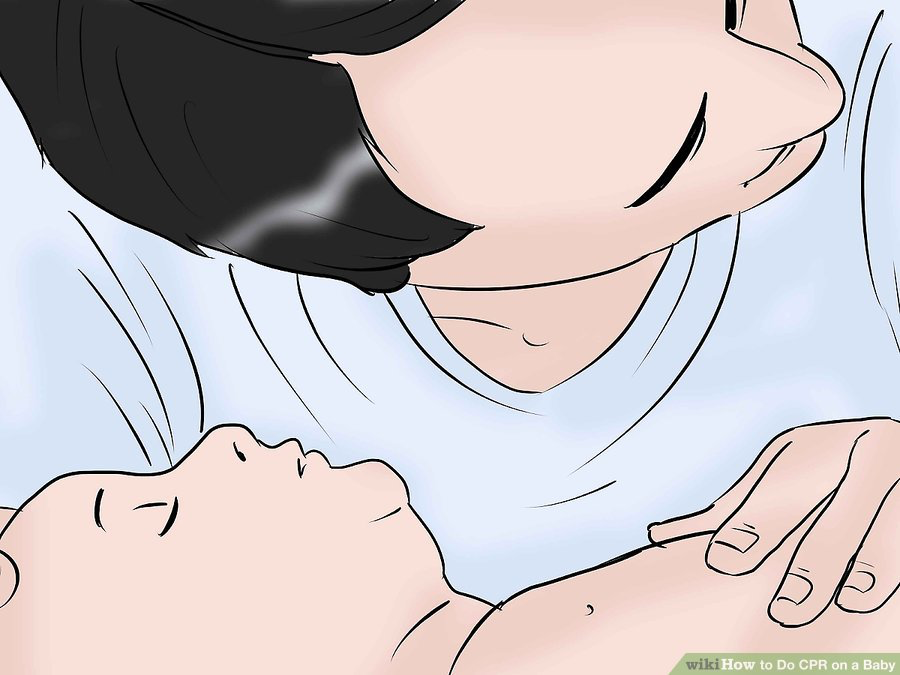
- The scene becomes suddenly unsafe
6. To remember the stages of CPR, remember "ABC"
Keep this useful mnemonic handy in order to remember the process of delivering CPR.
- A is for airway: Open or check that the airway is open.
- B is for breathing: Pinch the nose, tilt the head back, and give two rescue breaths.
- C is for circulation: Check if the baby has a pulse. If not, perform 30 chest compressions.
_______________________________________________________________________________________________________________________
Are you a healthcare practitioner who enjoys patient education, interaction and communication?
If so, we invite you to criticise, contribute to or help improve our content. We find that many practicing doctors who regularly communicate with patients develop novel and often highly effective ways to convey complex medical information in a simplified, accurate and compassionate manner.
MedSquirrel is a shared knowledge, collective intelligence digital platform developed to share medical expertise between doctors and patients. We support collaboration, as opposed to competition, between all members of the healthcare profession and are striving towards the provision of peer reviewed, accurate and simplified medical information to patients. Please share your unique communication style, experience and insights with a wider audience of patients, as well as your colleagues, by contributing to our digital platform.
Your contribution will be credited to you and your name, practice and field of interest will be made visible to the world. (Contact us via the orange feed-back button on the right).
Disclaimer:
MedSquirrel is a shared knowledge, collective intelligence digital platform developed to share medical knowledge between doctors and patients. If you are a healthcare practitioner, we invite you to criticise, contribute or help improve our content. We support collaboration among all members of the healthcare profession since we strive for the provision of world-class, peer-reviewed, accurate and transparent medical information.
MedSquirrel should not be used for diagnosis, treatment or prescription. Always refer any questions about diagnosis, treatment or prescription to your Doctor.

